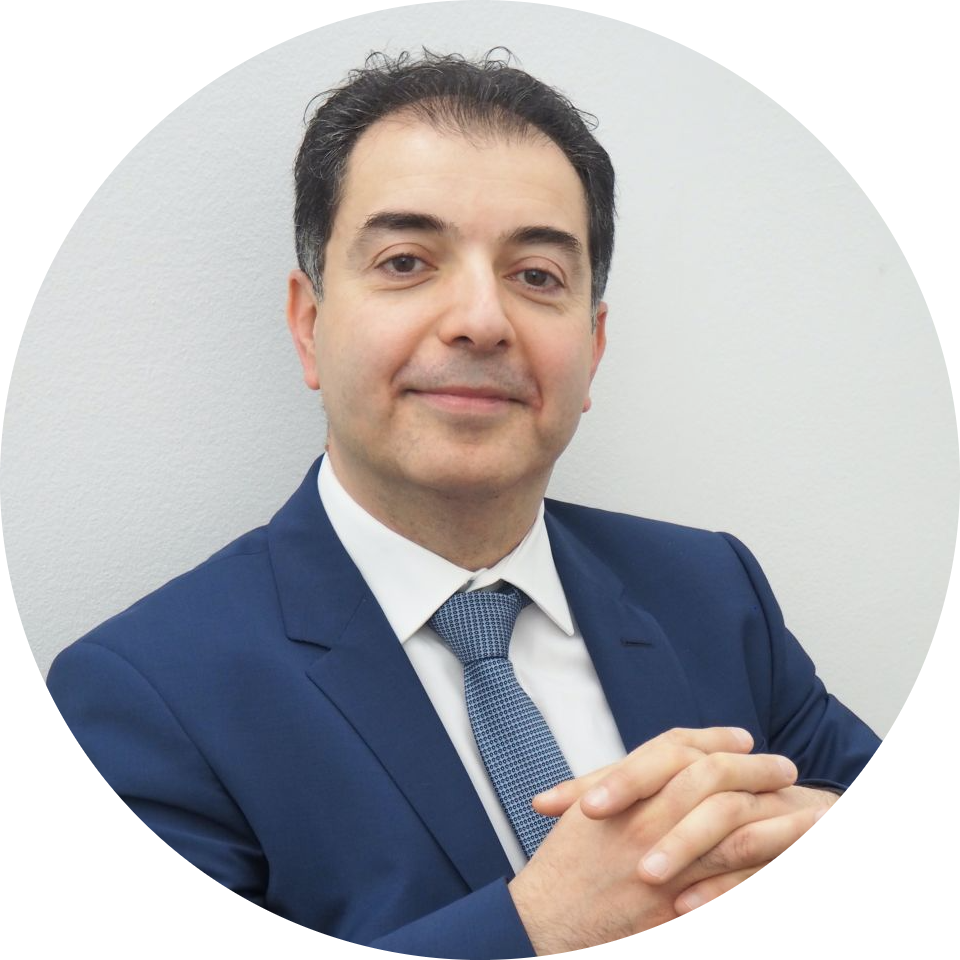Everything You Need To Know About Cataracts
Cataracts are a common visual impairment that is often associated with ageing. They can obscure the passage of light to your retina, resulting in reduced visual clarity or altogether compromised vision. In this article we will be exploring everything about the condition, its causes, contributing risk factors, and treatments available.
What is a cataract?
In the simplest terms, a cataract Is a cloudy area that can form in the eye’s lens. This can prevent light from passing through the eye and reaching the retina. The retina is a structure in the eye that converts stimulation from light into signals that are then sent to the brain via the optic nerve.
As such, if something interferes with the amount of light that reaches the retina, it can lead to a reduced sensitivity to visual stimuli. Cataracts can form in both of your eyes, but it is unusual for them to develop simultaneously. They are one of the leading causes of visual impairment in older people.
How do cataracts form?
Cataracts begin to form when proteins in the eye begin to clump together in a cloudy mass that prevents light from passing through the lens effectively. This is due to a natural occurrence where the proteins in the eyes normally start to break down at around age 40. The clump can become worse over time, gradually becoming more noticeable.
Types of cataracts
There are many types of cataracts that patients need to be aware of. They can be caused by a number of factors, both internally and externally. The main types of cataracts are:
- Nuclear cataracts (Cataracts forming the center of the lens)
- Posterior subcapsular cataracts (cataracts forming at the back of the lens)
- Cortical cataracts (cataracts forming at the edges of the lens)
- Congenital cataracts (cataracts you’re born with)
Various types of cataracts are classified on where and how they form in your eye. For example, nuclear cataracts form in the middle of the lens, whereas cortical cataracts develop around the edge of the nucleus. You may also develop posterior subcapsular cataracts at the back of the lens. This type of cataract creates a ‘halo effect’, which makes it difficult for the patient to read.
They may also develop as a result of certain life events. For example, they can be congenital and be present from birth or form within the first year of a baby’s life. Otherwise, they could be secondary cataracts caused by another ailment or a side effect of certain medication.
You might also develop cataracts from a traumatic event like a head injury. Cataracts caused by penetrating or blunt trauma can start to develop days or even years after the injury. So it’s important to go for regular checkups with your ophthalmologist to ensure you aren’t developing cataracts.
What causes cataracts?
As discussed above, cataracts can develop for various reasons. These include the natural process of ageing, traumatic life events, or comorbidities. While some of these, like an injury to the eye, are unpredictable, several risk factors can increase an individual’s likelihood of developing cataracts. Some of these are:
- Old age
- Drinking alcohol frequently and excessively
- Smoking
- Being overweight or obese
- Having high blood pressure
- Family history of cataracts
- High exposure to the sun or UV radiation
- Diabetes
- Exposure to radiation such as X-rays or cancer treatments
Are cataracts hereditary?
There is a strong genetic link to cataract development. We are all at risk of developing the condition as we age, but you might be more likely to develop the ailment if there is a history of cataracts in your family. Some forms of cataracts, like congenital cataracts or other types associated with systemic diseases, are also strongly linked to genetic factors.
Symptoms of cataracts
The symptoms of cataracts often develop gradually over time, so it can be difficult to notice them before they begin to significantly impact your vision. However, there are some common signs that you might need to visit an ophthalmologist to diagnose the presence of cataracts. These include:
- Blurred eyesight
- Difficulties seeing at night
- Differences in how you perceive colours
- Sensitivity to glare
- Halos around lights
- Double vision
- Frequently changing your glasses prescription
If you are experiencing any of these symptoms, please book a consultation today with one of our experienced ophthalmologists to see how we can help.
Glaucoma and cataracts
Glaucoma is a common condition that is caused by damage to the optic nerve. It is usually caused by a build-up of fluid in the front of the eye, leading to increased pressure within the organ.
While glaucoma doesn’t cause cataracts, it can make them worse in certain situations. For example, glaucoma surgeries like a trabeculectomy or drainage devices like shunts or tubes can accelerate the formation of cataracts. Additionally, there are some common risk factors shared by glaucoma and cataracts. For example, they can both stem from topical steroids used for treating inflammation.
Diabetes and cataracts
Diabetes is one of the key factors that play a role in an individual’s likelihood of developing cataracts. While the interaction between diabetes and cataract formation is not yet fully understood, it is clear that those living with diabetes have a much greater risk of visual impairment. Damage to the eyes is thought to be related to blood sugar levels, so by controlling these effectively, you can reduce the risk of diabetes-related cataracts.
For more information, please visit our diabetes and eye health page.
Cataracts and driving
Unfortunately, due to certain symptoms of cataracts like blurred vision and increased difficulty with vision at night, the disease can compromise your ability to drive. However, this will likely depend on the severity of the condition.
You are not legally required to inform the DVLA of your cataracts as long as you still meet the vision standards for driving. So, as long as you can still read a car number plate from 20 metres away and you have a visual acuity of at least 0.5 on the Snellen scale, you should be okay to drive.
If you are a bus, coach, or lorry driver, there are some slightly different standards. You still need to meet the government’s visual standards for driving, but you also need to show that you do not have an increased sensitivity to glare due to cataracts.
Cataracts treatment
If they are not treated, cataracts can significantly interfere with daily activities and even result in complete blindness. While they might stop growing, they do not get better without medical intervention, so it is essential to find a treatment that works for you.
While a common choice is to undergo surgery to remove cataracts, some people do not wish to have surgery on their eyes unless it is absolutely essential. As such, a doctor might prescribe methods of managing the symptoms. You might be prescribed stronger glasses or anti-glare sunglasses if the condition is mild.
Cataracts surgery
Doctors will often recommend surgery if your cataracts are preventing you from carrying out day-to-day activities. For example, if you have trouble reading or driving, a doctor might suggest surgery to remove cataracts.
The most common cataract treatment is called phacoemulsification cataract surgery. This technique involves a tiny device that vibrates at ultrasonic speed to fracture the lens into small particles. The tiny particles are then removed by a small vacuum through a tiny slit no larger than 2.40 mm.
There are various other surgical techniques to remove cataracts, and these are typically very safe. Overall, fewer than 1% of people will experience complications from cataract surgery.
How to prevent cataracts
While your risk of developing cataracts increases as you age, there are some steps that you can take to reduce the chances of cataract formation. A good way to do this is to protect your eyes from UV radiation when you’re outside by wearing sunglasses as the sun can cause cataracts. Additionally, consider lifestyle changes like:
- Quitting smoking
- Eating fruits and vegetables high in antioxidants
- Maintaining a healthy weight.
- Stay on top of your blood sugar levels if you have diabetes
Finally, one of the best ways to prevent cataracts and manage their formation as you age is to have regular eye examinations. Therefore, consider scheduling routine appointments with Eye Clinic London to stay on top of your ocular health and identify any issues as and when they occur. Taking a proactive approach to your vision is one of the best ways to preserve your eyesight as you age, so regular check-ups are essential.
To find out more or to schedule an eye examination, please book a consultation with one of our experienced practitioners.
Share This Story, Choose Your Platform!
Suffering from dry eyes?
Take our 2-minute online dry eye assessment to see if we can help alleviate your symptoms and tackle your condition
Our most popular treatments
What our patients say…
“As soon as I met Mr Hamada, I knew I was in safe hands. He is an expert in his field, and very reassuring. His work was impeccable, and I would thoroughly recommend him to anyone wanting a professional, kindly, expert service.”
“I came all the way from the US to be evaluated by Mr. Samer Hamada who provided me with a world-class experience. I was treated with technology that doesn’t exist in the United States. My vision improved significantly since the surgery. Mr. Samer Hamada is definitely a Keratoconus expert.”
“I am glad to be with Mr Hamada. I am glad to be examined by Mr Hamada who acts responsibly and professionally. I never had this experience before from a previous ophthalmologist. I am thankful to Mr Hamada for the successful diagnosis and treatment of my case.”
“What a Consultant. Dr. Hamada is a man who was born for this profession. As soon as we walked into the room you felt that you had met a man who was gentle and kind. His demeanour was of a man who knew his trade. He speaks in a way that you will understand. He explains exactly what is wrong and the way he will help fix it for you.”
“Mr Hamada’s London Eye Care and his team are a delight. Nothing was too much trouble and the help, support, advice and guidance before during and after the surgery was all world class. I have worn glasses since the age of 13 years and had the onset of cataracts for the last five so it has all been very much a life changing experience to be free from glasses once more.”
“Mr Hamada, his assistant Joanna and his ophthalmic technicians provide a caring, efficient and high quality service. From the admin through to the surgical aftercare we were very well looked after and we had a high degree of confidence in Mr Hamada’s abilities. Our daughter’s cataracts have been corrected (under general anaesthetic) and her quality of life has improved substantially. You also feel well cared for throughout – the human touch is vital in healthcare, but not always delivered, so well done and thanks to all of the team.”
“We were referred to Dr.Hamada by one of the UK experts. The expert himself admitted that Dr.Hamada was better than him!! We were not disappointed at all. Dr. Hamada was excellent with my child. His communication skills and knowledge were exemplary. He gave us clear management plan and would not hesitate to recommend him.”
“Dr Hamada is an excellent, highly competent doctor with a very kind and sympathetic manner. His reputation for successfully treating dry eye patients seems unparalleled. His team are all extremely friendly and helpful, especially Dr Hamada’s PA Joanna, making the overall experience better than anywhere else I’ve been!”
“Appointment setting and follow-up were very efficient and well managed. Mr Hamada was kind, reassuring, knowledgeable and had a very warm manner with my young son, making him instantly feel at ease. I feel that we can trust him and that he will finally be able to solve my son’s long-term eye problems that have stumped other eye doctors.”
We have replaced some of the images of real patients who provided these testimonials to protect their privacy.

About the expert
Mr Hamada | Consultant Ophthalmologist and Corneal Surgeon
MD, MSc, DO (hons), FRCSEd, FRCOphth I am Samer, founder and consultant ophthalmic surgeon with over 20 years’ experience in ophthalmology. I am a world-renowned specialist in cornea, cataract and refractive surgery. I’m not only a leading surgeon but also the only dual fellowship trained in corneal diseases in children from reputable institutions in the UK. At Eye Clinic London I work closely with other consultant ophthalmologists, optometrists and orthoptists to achieve the best outcomes for our patients. Our main aim is to make sure our patients get the safest and best treatments available to them. We put your safety before anything else so you can rest assured that if you choose us you will be in the best and safest hands.












